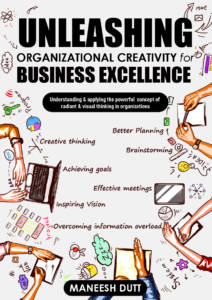A project plan, according to the Project Management Body of Knowledge (PMBOK), is: “…a formal, approved document used to guide both project execution and project control. ….”. A very important aspect of any project plan is Project Scheduling. So much so that in many organisations the term “project schedule” is interchangeably used to refer to a project plan even though the latter has a larger connotation. The choice of a tool for scheduling is important (MS project, Primavera etc.) and one must understand fully the nuances of the scheduling tool.However, beyond the tool, there are 6 essential elements of any Project Schedule which when addressed correctly will enable a better management of your Project:
1) Getting the Milestones Right: I have experienced this many a times (in my workshops/consultancy) that given the same project when you ask two different project team members to identify the project milestones, each of them come’s up with a different version. And therein lies the confusion as to which one is more appropriate for the given project. Understand first that your project milestones are the satellite view of your project activities and at the same time these are also the foundations of your project. Every subsequent task and relationship that you define will be a reflection of the original milestones defined hence the need to carefully think them over. Do not limit the milestone definition to an internal brainstorming activity done by the project team; discuss the milestones with your customer and/or other important stakeholders before finalizing. If the customer has already finalized these in an approved statement of work or equivalent document then ensure that your project schedule is aligned to it. The milestones can either be a linear movement in time (by phases) or a grouping of a similar activities wherein the milestones have minimum dependency on each other thus allowing for their parallel execution. From your project type it would usually be easy to decide which approach to take however avoid mixing the two approaches in the same plan.
2) Defining the tasks to the right level: The granularity of the activities in a milestone should be such that the individual task can be clearly assigned to a resource or the task is easy to track or estimate. Splitting a task endlessly does not add value to the project schedule instead makes it more cumbersome to track. With a little experience a project manager will be able to master this.
3) Aligning the resources: Every employee is part of the company’s organisation chart and has roles /responsibilities defined accordingly. Now, in context of a project some of these roles/responsibilities may need to be magnified or attenuated hence it always helpful to have a formal project organisation chart in place. Additionally do a quick check with all the team members regarding their understanding of the individual & team responsibilities. Once this is clear it is easy to assign resources to the identified activities.
4) Mastering the Dependencies: All tasks (expect the first & last) in a project schedule need to be connected (directly or indirectly) to other tasks. Keep in mind that a task can have more than one dependencies also. At no point should you have a hanging task i.e. one which is not connected to any other activity in the project (exceptions could be repetitive tasks such as a weekly review meeting etc.). A quick look at the project GANTT chart will help you identify and eliminate such tasks.
5) Estimating it right: There are many techniques available for estimating the individual activities /milestones (Analogous Estimation, Parametric, Expert Judgement, Delphi etc). The basic principle of these techniques is to eliminate personal biases (optimistic/pessimistic estimate) in the estimates and come as close to the real picture as possible. Practically, if you already have sufficient experience in your project type, you could well estimate directly and limit the application of the estimation techniques to the grey areas, if any.
6) Don’t fiddle with the activity dates: Once you have the activities, dependencies, estimates in place; your project schedule will provide you dates basis these elements. Now, in my experience, I have repeatedly observed project managers making the mistake of changing directly the activity dates that are not in line with their/project expectation. Understand that the milestone/activity dates are merely a function of the activity effort/duration, relationships and resource loading. Changing the task dates directly brings to nought all the good work done in making the project schedule in the first place and impacting the overall plan. Instead, analyse the scenario why a date should be later or earlier and then iterate with the other elements (activity effort/duration, resource loading or relationships) to achieve the required date for a given activity/milestone. Identify a corresponding action or risk, if necessary.This is the real benefit of a good project schedule.
Once the above elements are taken care of , the project monitoring becomes easy. During the course of the project there will be situations where new tasks need to be introduced , even for these use the same principles as outlined above for keeping your project on track.
Need help with your project plan or other aspects of Project Management? Simply drop me a message by clicking here.
You can also check out my books on Amazon by clicking here.



